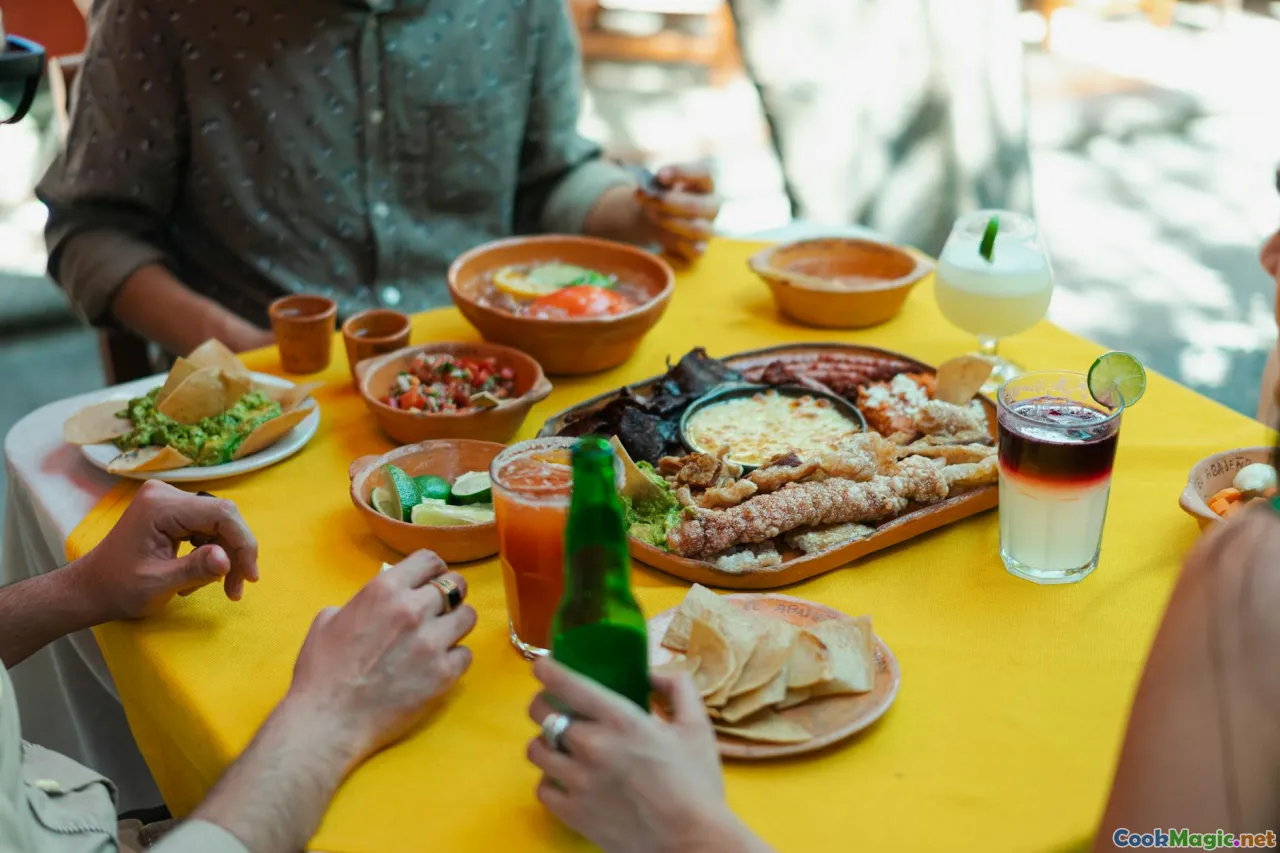Tajik Meat Dishes: The Tradition Behind Each Cut
8 min read Discover the rich cultural heritage of Tajik meat dishes, where every cut tells a story and tradition shapes every flavorful bite. April 26, 2025 23:00
Tajik Meat Dishes: The Tradition Behind Each Cut
Imagine a place where the aroma of seasoned meat wafts through the air, mingling with the mountain breeze and echoing centuries of tradition. Tajikistan, a land nestled in the heart of Central Asia, is a country where culinary practices are deeply intertwined with history, culture, and social fabric. Among its many treasures, Tajik meat dishes stand out—not just for their rich flavors but for their profound respect for each cut of meat, each with its own story and purpose.
Introduction: The Cultural Significance of Meat in Tajik Society
In Tajik culture, meat is more than sustenance; it is a symbol of hospitality, community, and reverence for tradition. From the bustling bazaars of Dushanbe to remote mountain villages, the way meat is prepared, served, and consumed reflects centuries of customs passed down through generations. Every cut has a designated role, and understanding these distinctions provides a window into the Tajik worldview—where harmony, respect, and appreciation for nature's gifts are paramount.
The Historical Roots of Tajik Meat Preparation
Historically, Tajikistan's nomadic ancestors relied heavily on livestock—sheep, goats, and cattle—to sustain their way of life. These animals were not only a source of nourishment but also a vital part of cultural rituals and social status. The traditional slaughtering and butchering processes were performed with reverence, adhering to Islamic dietary laws and customs rooted in Zoroastrian traditions.
The meat was carefully divided into specific cuts, each with its own culinary destiny. Over centuries, these practices evolved but retained their core principles—respect for the animal, appreciation for the flavor of each cut, and a communal approach to sharing food.
The Anatomy of Tajik Meat Dishes: A Cut-by-Cut Exploration
1. The Lamb Shoulder: The Heart of Festive Feasts
The lamb shoulder, known locally as "sang-i-jan", is revered for its rich, marbled fat and tender meat. It’s the centerpiece of the "Shashlik"—skewered, marinated, and grilled to perfection—offering a smoky flavor that evokes memories of gatherings in mountain yurts. The slow-cooked shoulder, often roasted with garlic, cumin, and coriander, yields succulent, fall-off-the-bone tenderness, inviting communal sharing.
2. The Rib Rack: A Delicate Delight
Tajik cuisine values the rib section, "qarn-i-qarab", for its balance of meat and bone. These ribs are often grilled or braised, their flavor intensified by traditional spice blends. The visual appeal of a rack of ribs, glistening with marinade and charred at the edges, is matched by their melt-in-your-mouth texture—perfect for special occasions.
3. The Heart and Liver: Offal with Respect
In Tajik kitchens, offal is treated with reverence. The heart ("qalb") and liver ("jigar") are prized ingredients, often cooked simply with onions and herbs or made into hearty stews. These cuts symbolize humility and resourcefulness, transforming what some might discard into exquisite delicacies.
4. The Leg and Shank: Slow-Cooked Comfort
The leg ("pesh") and shank are ideal for long, slow braises—resulting in tender, flavorful meat that falls apart with ease. Dishes like "Kuurdak", a traditional fried meat and potato dish, often incorporate these cuts for their robust taste and satisfying texture.
5. The Neck and Cheeks: Rich and Flavorful
Neck and cheek meat are prized for their deep, concentrated flavors. Often used in stews or kebabs, these cuts benefit from long cooking times, which break down connective tissues and develop a luscious richness.
Traditional Cooking Techniques and Their Cultural Roots
Tajik cuisine employs a variety of cooking methods that highlight the unique qualities of each cut:
- Slow roastingandbarbecuing (kebab-style) preserve the natural flavors while imparting a smoky aroma.
- Stewingandbraising soften tougher cuts, creating tender, flavorful dishes that embody patience and respect.
- Marinating with local spices like cumin, coriander, and sumac enhances flavor and tenderizes the meat.
These techniques are often performed communally, especially during celebrations such as Nowruz (Persian New Year) and wedding festivities, reinforcing social bonds.
Personal Stories and Anecdotes: The Heart of Tajik Food Culture
During my visits to rural Tajik villages, I witnessed firsthand how meat is more than food—it's a symbol of hospitality and identity. I remember sitting around a fire, watching a local elder carefully prepare "Kebab-i-mazza", skewering marinated lamb chunks onto metal rods, then grilling them over open flames. The aroma was intoxicating, blending smoky, spicy, and savory notes.
He explained, with a gentle smile, that every cut has its purpose; the shoulder for celebrations, the ribs for sharing, the offal for humility. These traditions are not merely culinary but spiritual, embodying respect for the animal and gratitude for the bounty.
Modern Twists and Global Influences
While traditional methods remain cherished, contemporary Tajik chefs are experimenting—combining age-old techniques with modern flavors. From grilled kebabs infused with pomegranate molasses to stews with a hint of chili, these adaptations honor the past while embracing innovation.
Yet, the core principle endures: each cut of meat holds a story, a tradition, and a connection to Tajik identity.
Conclusion: Embracing the Heritage, Savoring the Flavors
Tajik meat dishes teach us that food is more than sustenance; it is a vessel of history, culture, and community. Each cut of meat, prepared with reverence and skill, invites us into a narrative that spans centuries—reminding us that the way we treat food reflects our respect for nature, tradition, and each other.
So next time you savor a kebab or a hearty stew, remember the story behind each cut—an enduring testament to Tajikistan’s rich culinary heritage and the timeless bonds forged around the table.









